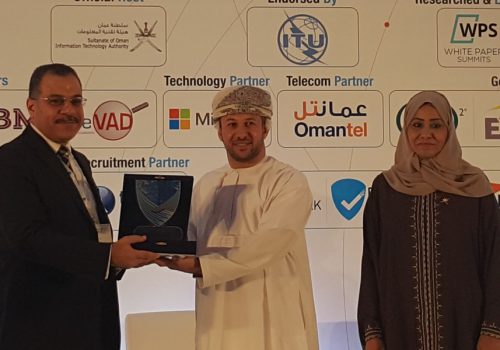The digital world is always on the move, and so is the landscape of cybersecurity leadership. The CISO, once known as the tech wizard, is now stepping up as a strategic business leader. This is not just a random shift; it is fueled by a rising tide of cyber threats and a growing need to have a cybersecurity game plan aligned with business objectives (i.e., ISO/IEC 27001 requirements).
The old tale of CISOs as mere digital gatekeepers is getting a rewrite. They are now key players in big boardroom chats, breaking down geeky cybersecurity jargon into business talk and having a say in the big decisions. As companies dive headlong into the digital age, the CISO is the go-to person navigating through the stormy cybersecurity seas. This new role is exciting but it is not a walk in the park. It calls for a mix of tech-savvy and business smarts, marking the start of an era where the CISO is at the intersection of gadgetry and business strategy.
Before Becoming a Business Leader, the CISO Must Become a Leader
- The Genesis of Leadership in the CISO Domain
The metamorphosis from a technical maestro to a business-centric leader marks a crucial phase in a CISO’s career trajectory. The modern CISO now sails through uncharted waters that span across sales, finance, strategic planning, competitive positioning, and a more holistic approach to risk management. This evolution is not about merely climbing the leadership ladder but expanding one’s horizon to encapsulate a myriad of business domains. It is about breaking free from the tech silo and weaving cybersecurity threads into the broader organizational tapestry. - Fostering Collaborative Synergy
The multidisciplinary essence of the CISO role nurtures a fertile ground for collaboration. A CISO now orchestrates a harmonious tune with various business units, forging a cohesive strategy that aligns cybersecurity initiatives with overarching business goals. It is no longer a solo performance but a collaborative symphony that resonates across the organizational echelons. - Real-World Engagements
Today’s CISOs are not confined to the corners of a tech office but are active participants in high-stake management discussions, strategy blueprinting sessions, and critical business decision-making processes. They are at the helm, navigating the enterprise through the turbulent cyber seas toward safe and prosperous shores. - Steps Towards The Final Form
The journey encompasses more than just levels; it embodies phases of transformation that polish the technical expert into a multifaceted business strategist. Each phase is a step towards achieving the “final form” – a CISO who is not only the guardian of cybersecurity realms but also a key player in sculpting the business landscape. - Fundamental Leadership Qualities for Modern CISOs
CISO’s journey now demands a blend of technical expertise intertwined with essential leadership qualities. These qualities are not just about leading a team but about steering the entire organization through the stormy waters of cyber threats, ensuring safe passage toward business growth and innovation.

Extreme Ownership: Adopting a mindset of extreme ownership is crucial for modern CISOs. It entails owning everything in their world, being accountable for the outcomes, and taking responsibility for both successes and failures. This principle underscores the importance of authority, accountability, and responsibility in achieving organizational cybersecurity goals.
Visionary Thinking: A key trait for leaders is the ability to see the bigger picture, anticipate potential challenges, and devise strategies that align with long-term goals.
Effective Communication: Leaders need to articulate their ideas clearly and persuasively to rally the team towards common objectives.
Building Relationships: Effective collaboration with stakeholders across the organization is crucial. Fostering a culture of trust enables open communication and integration of security concerns into all business initiatives.
Coaching, Mentoring, and Training: Developing talent and nurturing a high-performing cybersecurity team is pivotal for enhancing organizational cybersecurity posture.
Influencing the Organization: Communicating the value of cybersecurity and securing necessary resources for implementing robust security measures, ensuring cybersecurity is viewed as a business enabler rather than a hindrance.
These leadership qualities, elucidate the multifaceted role of modern CISOs. It emphasizes a blend of technical expertise, strategic foresight, and business acumen essential for navigating the complex cybersecurity landscape while aligning with broader business objectives.
The Traditional CISO is Obsolete, Welcome the Modern Technical CISO
- The Dichotomy of Technical Expertise and Business Acumen
The role of the CISO has been on a roller-coaster ride over the years, morphing from a strictly technical role to a tech guru and business strategist. The swift pace of technological evolution has not only altered the threat landscape but also the expectations from a CISO. The question buzzing around is: In this tech-heavy era, should the pendulum swing back towards a technical CISO, or is the business-savvy CISO the hero we need?
The intersection of technical expertise and business acumen is where the modern CISOs find themselves. The trick is not about choosing one over the other but harmonizing the two. A CISO needs to talk tech with the IT crew and switch to business lingo with the board, all while keeping the organization’s cyber armor intact. - Re-defining the Technical CISO: A Hybrid Skillset
The narrative that “Technical CISO is dead” might need a revision. Perhaps, what we are witnessing is the rebirth of the Technical CISO, now armed with a hybrid skillset – a blend of technical prowess and business understanding. This evolution opens up the conversation for a new role in the arena, the Business Information Security Officer (BISO). The BISO, with a business-oriented outlook, could bridge the communication gap between the boardroom and the IT department, while the Technical CISO dives deep into the security trenches, battling the everevolving threats.
However, does the bifurcation into a BISO and a Technical CISO solve the puzzle or add another layer of complexity? It is food for thought that nudges organizations to reevaluate the CISO role, the expectations tied to it, and the skill set required to navigate the choppy waters of today’s cybersecurity landscape.
The shifting sands of technology and business demand a CISO who is not only sharp with the latest cyber tools but also adept at translating cyber risks into business impacts. Whether it is the comeback of the Technical CISO, the rise of the BISO, or the reign of the hybrid CISO, the crux is about balancing the scales of technical expertise and business acumen to foster a secure and innovative business environment.

Is BISO, the Future of CISO?
- The Emergence of Business Information Security Officer (BISO)
The fast-paced evolution of the digital landscape has birthed the concept of BISO, a role envisaged to bridge the sometimes gaping chasm between technical cybersecurity realms and business objectives. The BISO emerges as a conduit, translating the complex cybersecurity narratives into a language that the boardroom understands and appreciates. They are envisioned to have a firm grasp on business operations, financial impacts, and strategic goals, all while maintaining a solid understanding of the cybersecurity challenges at hand. This dual-focus approach of the BISO aims to ensure that cybersecurity initiatives are aligned with business objectives, fostering a culture where security propels business growth rather than hindering it. - BISO vs CISO: A Comparative Analysis
The discourse between BISO and CISO is not about rivalry, but about complementing and elevating the organizational cybersecurity posture. Below is a comparative glance:
1. Focus:
- CISO traditionally leans towards a technical-centric approach, diving deep into the cybersecurity trenches to mitigate and manage cyber risks.
- BISO, on the other hand, is oriented towards understanding business priorities, risk appetites, and ensuring cybersecurity initiatives are in harmony with business goals.
2. Communication:
- CISOs often find themselves in the labyrinth of technical jargon which might not resonate well in the boardroom.
- BISOs act as translators, conveying the cybersecurity narrative in business terms, and aiding in informed decision-making.
3. Skillset:
- CISOs possess a robust technical foundation coupled with an understanding of the business landscape.
- BISOs may lean more towards business acumen while maintaining a solid, albeit not as deep, understanding of cybersecurity principles.
4. Strategic Alignment:
- CISOs work towards aligning cybersecurity strategies with organizational objectives, but the focus remains largely on technical robustness.
- BISOs ensure that the cybersecurity strategy is a business enabler, contributing to achieving broader business objectives.
The dialogue around whether a BISO is the future of the CISO is a testament to the evolving cybersecurity landscape. It nudges organizations to ponder on how to structure their cybersecurity leadership to not only combat the burgeoning cyber threats but to also support and drive business objectives. The line between a CISO and a BISO may blur as the hybrid skillset becomes the new norm, encapsulating both technical expertise and business acumen to navigate the complex interplay of cybersecurity and business growth.
This dynamic has been well articulated by my colleague Guy Marong during the PECB Insights Conference, where he noted, “CISOs are enablers of business in an insecure environment.” I would further embellish this notion by stating that: without security, business operations are jeopardized, and vice versa, without a business agenda, there is essentially nothing to secure.

Conclusion
- Reflection on the CISO Odyssey: Embracing the Future
The journey of a CISO, from a technical expert to a business leader, is akin to an odyssey filled with evolving challenges and learning curves. In the quest to align cybersecurity endeavors with business aspirations, the narrative of CISO’s role has been rewritten. The emergence of BISO amplifies this evolution, highlighting the necessity for a harmonized approach towards technical and business objectives. As the cyber realm continues to intertwine with every facet of business, the CISO’s role is destined to be more integral and expansive. Embracing this future requires a mindset that is agile, a skill set that is hybrid, and a vision that sees beyond the immediate cyber threats toward long-term business sustainability. When it comes to skills, I would rephrase the well-known adage: “What got you here, will not get you there”. Therefore, we need to think about a whole new set of skills, way beyond the tech or business acumen, to keep this role evolving for the years to come. - Call to Action: Nurturing the Next Generation of CISO Leaders
The future beckons for a new breed of CISO leaders – individuals who are not only technically astute but also business-savvy. It is imperative to nurture and mentor the upcoming generation of cybersecurity leaders to equip them with the diversified skills required in this dual-domain role. Organizations, academic institutions, and industry bodies have a collective responsibility to foster environments that encourage continuous learning, mentorship, and exposure to real-world business-cyber challenges. It is about crafting a pathway that allows aspiring CISOs to evolve, understand the broader business ecosystem, and effectively communicate the value of cybersecurity in driving business success.
When it comes to nurturing, I can only cheer for PECB for introducing their new Certified CISO training and certification course to their roster. I genuinely hope this kind of course sparks a wave of diverse courses and content to meet the needs of CISOs, whether they lean technical or business. This is not just a call to action, but a shout for evolution, nudging the cybersecurity community to actively shape the CISO leaders of tomorrow, starting today.









